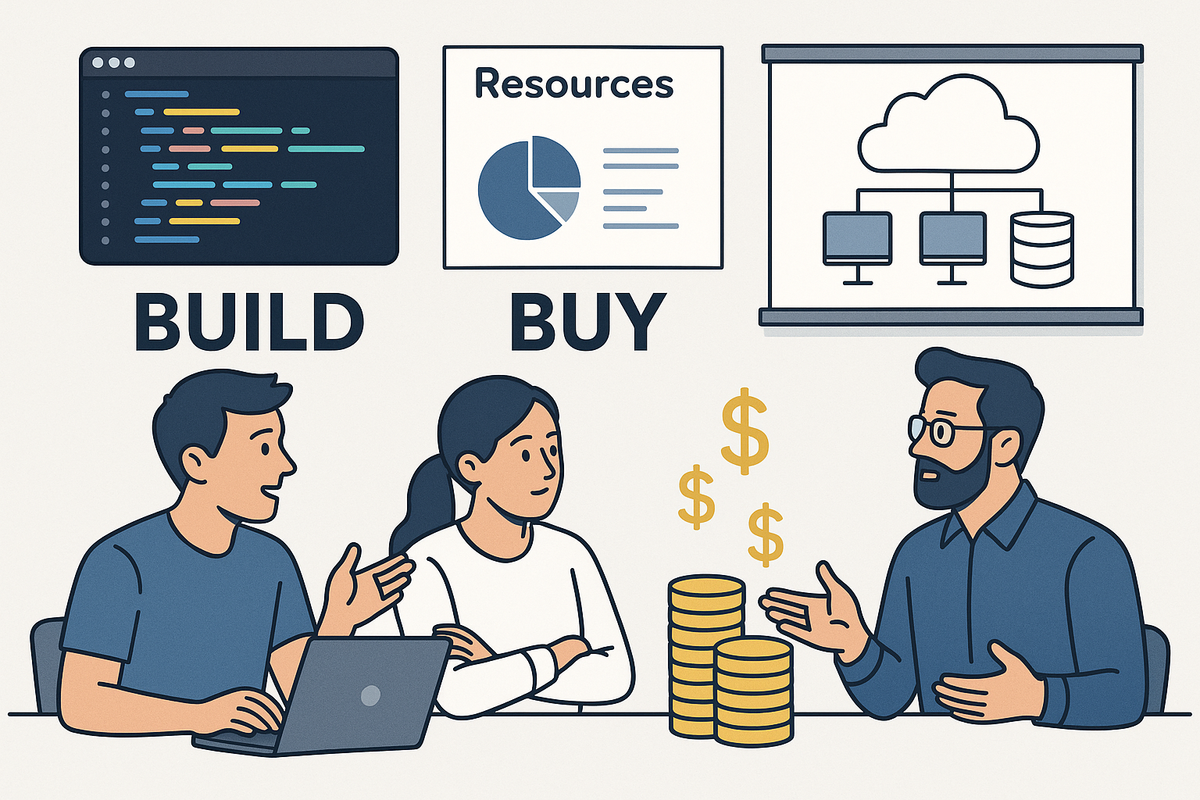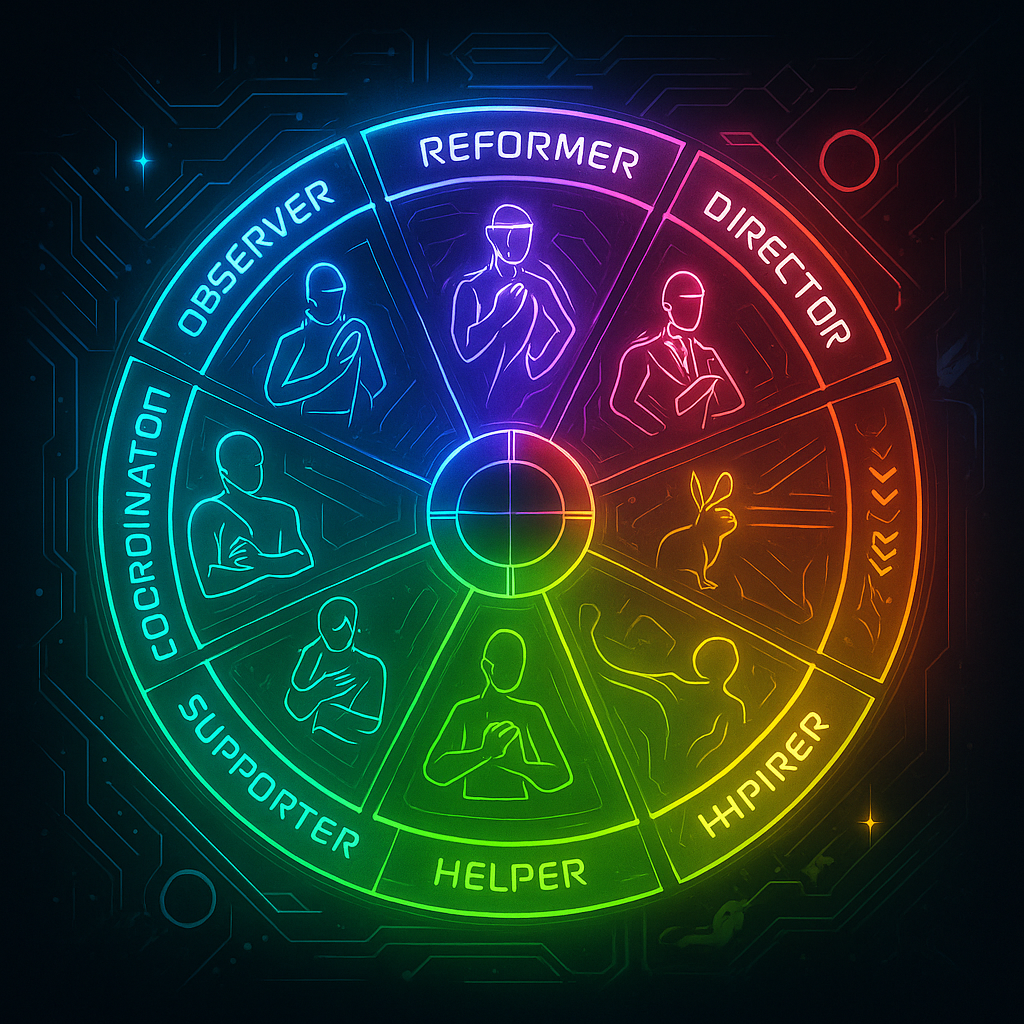Build vs. Buy: Making the Right Software Decision
Deciding whether to build custom software or buy an existing solution? Explore the critical factors that influence this choice, from team expertise and costs to long-term maintenance. Learn how to weigh the pros and cons to make the smartest decision for your business’s growth and sustainability.

Throughout my career, I've worn many hats in the world of product ownership—from business analyst to leading a small software development company. One question consistently echoes across every industry and project: When your business needs a new solution, should you build it from scratch or buy an existing product?
This decision is rarely straightforward. Several critical factors come into play:
- Do you have access to a capable software development team?
- Is there a reliable, ready-made solution already available in the market?
- How do the costs of building compare to purchasing or subscribing?
- Are there unique advantages to a custom-built solution versus adopting an external product?
While this is by no means an exhaustive list, these core questions will help guide you toward the right choice for your business. In this post, I'll break down what I consider the key considerations, weigh the pros and cons, and share insights to help you navigate the build-versus-buy crossroad.
Do You Have a Software Development Team?
One of the first questions to ask is whether you have the right resources to take on a development project. Perhaps you have a dedicated software development team—large or small—within your organization, or maybe you rely on trusted third-party partners for technical work. However, simply having access to developers doesn’t automatically mean building your own solution is the best path forward.
Consider these essential factors:
- Technical Expertise: Does your team possess the specific skills required for the technology stack and functionality you need? Experience with similar projects is a major advantage.
- Capacity: Do your developers have the bandwidth to take on a new project without impacting other priorities? Overstretching your team can lead to delays and burnout.
- Long-Term Maintenance: Software development doesn’t end at launch. Ongoing maintenance is crucial—addressing security vulnerabilities, enhancing features, and adapting to regulatory changes all require sustained effort and expertise.
Remember, building a solution is not a one-time event. It’s a long-term commitment that demands continuous attention and resources. Before deciding to build, ensure your team is equipped not just for the initial development, but for the ongoing journey that follows.
Does the Solution Exist Within the Market?
Before embarking on a custom development journey, it’s crucial to ask: Are you reinventing the wheel? If a robust, well-supported product already exists, building your own version may simply duplicate what’s already available.
Consider the following questions:
- Market Availability: Is there an existing solution that meets your needs, either fully or with minor adjustments? If so, what features or benefits does it offer compared to your vision?
- Differentiation: Does your idea offer something truly unique—a proprietary feature or a competitive advantage you plan to market beyond your own business use case? If not, what’s the compelling reason to build rather than buy?
- Value Proposition: If your solution doesn’t have a “secret sauce” or a distinctive approach, ask yourself: Why invest the time, money, and resources into development? Could those resources be better spent customizing or integrating an existing product?
Ultimately, unless you have a clear, strategic reason for building—such as a unique business need or a plan to commercialize your solution—it often makes more sense to leverage what’s already available in the market. This approach can save you time, reduce risk, and allow you to focus on what truly sets your business apart.
What Costs Are Involved to See Your Vision - Why Should You Consider Buying?
One of the most significant benefits of purchasing an existing solution is the ability to shift the burden of maintenance and continual development to the vendor. When you buy or subscribe to a proven product, you’re not just acquiring software—you’re also tapping into a team dedicated to keeping it secure, up-to-date, and compliant with industry standards.
This means:
- Reduced Maintenance Overhead: The vendor handles updates, bug fixes, and security patches, freeing your internal resources for other priorities.
- Continuous Improvement: You benefit from new features and enhancements as the product evolves, often based on feedback from a broad user base.
- Regulatory Compliance: Vendors often stay ahead of changing regulations, ensuring the solution remains compliant without requiring extra effort from your team. Imagine where AI regulation will be in a few years, this could be a major overhaul and headache for any company.
By choosing to buy, you effectively outsource much of the ongoing technical responsibility, allowing your business to focus on what it does best. This can lead to significant savings in both time and long-term costs.
Drawbacks of Buying Software
While buying an off-the-shelf solution can save time and reduce the burden of ongoing maintenance, there are important trade-offs to consider:
- Limited Customization: Pre-built software is designed to serve a broad market, which means it may not perfectly fit your unique business needs. Customizing these solutions is often limited or costly, and you may find yourself adapting your workflows to fit the software, rather than the other way around.
- Ongoing and Increasing Costs: Subscription fees, licensing, support, and training costs can add up over time. What seems cost-effective upfront may become expensive in the long run, especially as your business grows or your needs change.
- Vendor Dependency: Relying on a third-party provider means you’re dependent on their update cycles, support quality, and business stability. If the vendor changes direction, sunsets the product, or fails to deliver timely updates, your business could be left scrambling.
- Limited Integration: Off-the-shelf solutions may not integrate seamlessly with your existing tools and systems, potentially requiring additional workarounds or custom integrations that add complexity and cost.
- Risk of Sharing Ideas: When you request new features or share feedback with a vendor, you may be providing valuable insights that could be used to improve their product for all customers—including your competitors. In some cases, sharing your business processes or unique ideas with a vendor could expose you to competitive risks if not handled carefully.
But What If You Choose to Build?
If your product doesn't exist in the market, or you have a unique approach that's going to give your business an edge, here’s what you need to consider:
Upfront Costs
- Discovery and Planning: Initial requirements gathering, stakeholder interviews, feasibility studies, and project road-mapping. This phase takes time and resources depending on project scope and complexity, and these factors mean money.
- Design: UX/UI design, wireframing, prototyping, and user flow creation. Design costs can range from thousands to tens of thousands, depending on sophistication and the number of design iterations needed. I recall a rebranding project that cost $40k for a website overhaul alone.
- Development and Coding: The largest upfront expense, covering developer salaries or outsourcing fees, technology stack licensing, and infrastructure setup. Costs vary widely—from simple apps to complex, enterprise-grade platforms.
- Hardware and Software Licenses: Purchase of computers, servers, cloud resources, and development tools. Initial investments here can add up, especially for projects requiring specialized equipment. Assets become outdated and will need renewed.
- Testing and Quality Assurance: Multiple rounds of QA and user acceptance testing. It’s a whole other team; you can’t rely on developers to validate their own work. QA is often an understaffed department, because to some people wrongly believe if the software looks correct...it surely works correct.
- Deployment: Costs for launching the software into production, setting up servers, and initial user training. Marketing your new product to your users and customers.
Ongoing Costs
- Maintenance and Support: Regular updates, bug fixes, security patches, and technical support. Ongoing maintenance costs are often overlooked.
- Enhancements and Feature Updates: Continuous improvement to keep up with user needs, competitive features, and regulatory changes. These costs can sometimes exceed the initial build over the software’s lifetime.
- Infrastructure and Hosting: Ongoing expenses for cloud services, servers, and bandwidth.
- Compliance and Security: Costs to ensure your software meets evolving industry regulations and security standards. This may require periodic audits, additional development, and legal consultations.
- Team Retention and Training: Keeping your development team up-to-date with new technologies and processes, plus covering turnover and onboarding costs—the costs of doing business.
Building custom software is a significant investment, both at launch and over the long term. Factoring in these costs up front will help you make the correct decision when it comes to building solutions versus buying them.
Summary: Build vs. Buy—Making the Smart Choice
In the end, the decision to build or buy a software solution comes down to a clear-eyed assessment of your business’s needs, resources, and goals. The most important takeaway? Every solution requires ongoing maintenance and investment—there’s no such thing as “set it and forget it.” If you choose to build, be prepared for significant upfront and long-term costs, from development and design to infrastructure, compliance, and continual enhancements. Building a software solution comes with great rewards and opportunity, if correctly planned and implemented.
On the other hand, buying an existing solution allows you to offload much of the maintenance burden, tap into continuous product improvements, and often achieve faster time-to-value. Unless you have a truly unique idea or a proprietary advantage that will set your business apart, it’s worth asking: Are you adding real value by building, or simply reinventing the wheel?
By carefully considering your team’s capabilities, the availability of market solutions, and the full spectrum of costs involved, you can make a decision that aligns with your strategy—and sets your business up for sustainable success.



